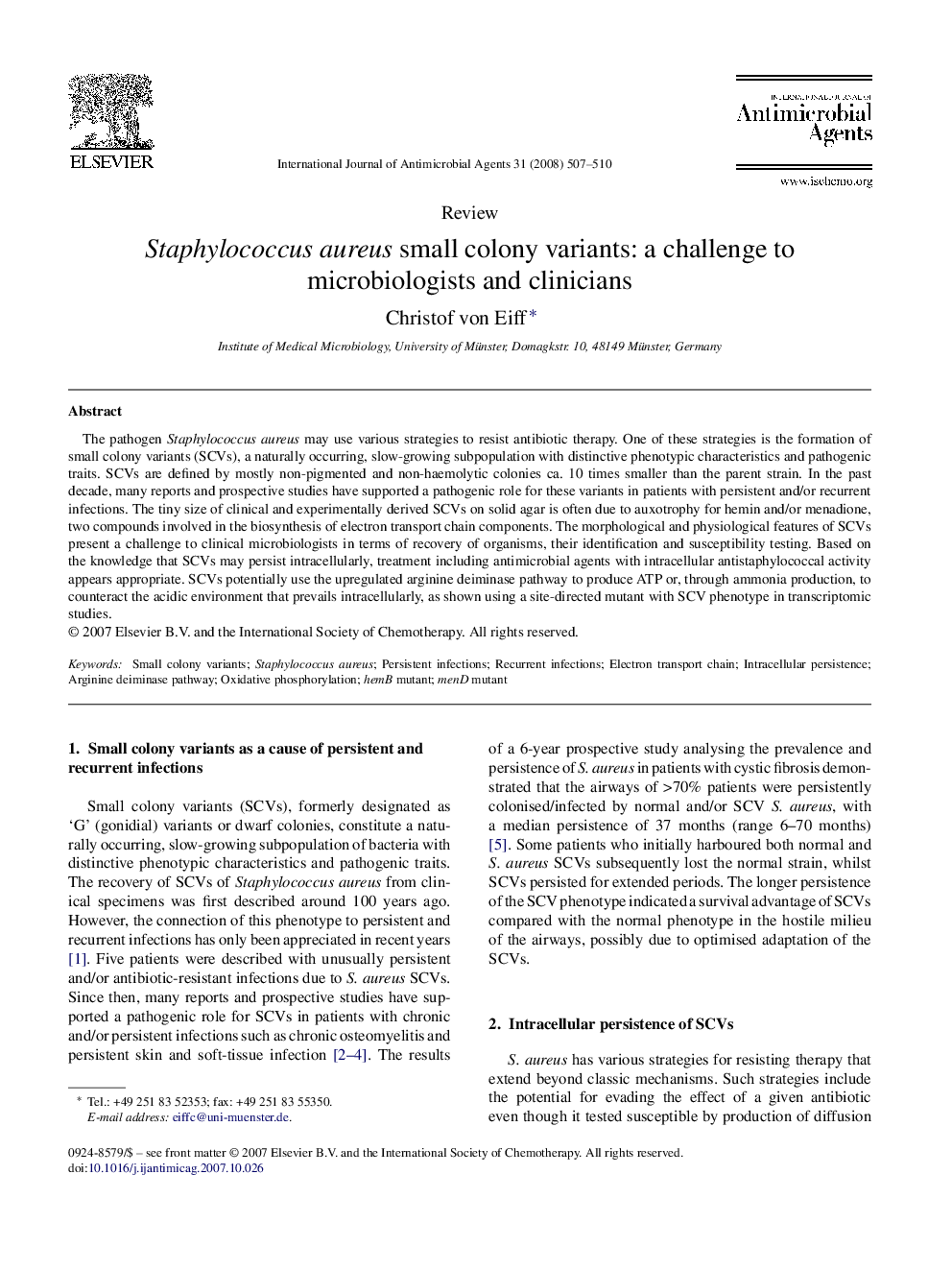| Article ID | Journal | Published Year | Pages | File Type |
|---|---|---|---|---|
| 3360717 | International Journal of Antimicrobial Agents | 2008 | 4 Pages |
The pathogen Staphylococcus aureus may use various strategies to resist antibiotic therapy. One of these strategies is the formation of small colony variants (SCVs), a naturally occurring, slow-growing subpopulation with distinctive phenotypic characteristics and pathogenic traits. SCVs are defined by mostly non-pigmented and non-haemolytic colonies ca. 10 times smaller than the parent strain. In the past decade, many reports and prospective studies have supported a pathogenic role for these variants in patients with persistent and/or recurrent infections. The tiny size of clinical and experimentally derived SCVs on solid agar is often due to auxotrophy for hemin and/or menadione, two compounds involved in the biosynthesis of electron transport chain components. The morphological and physiological features of SCVs present a challenge to clinical microbiologists in terms of recovery of organisms, their identification and susceptibility testing. Based on the knowledge that SCVs may persist intracellularly, treatment including antimicrobial agents with intracellular antistaphylococcal activity appears appropriate. SCVs potentially use the upregulated arginine deiminase pathway to produce ATP or, through ammonia production, to counteract the acidic environment that prevails intracellularly, as shown using a site-directed mutant with SCV phenotype in transcriptomic studies.
